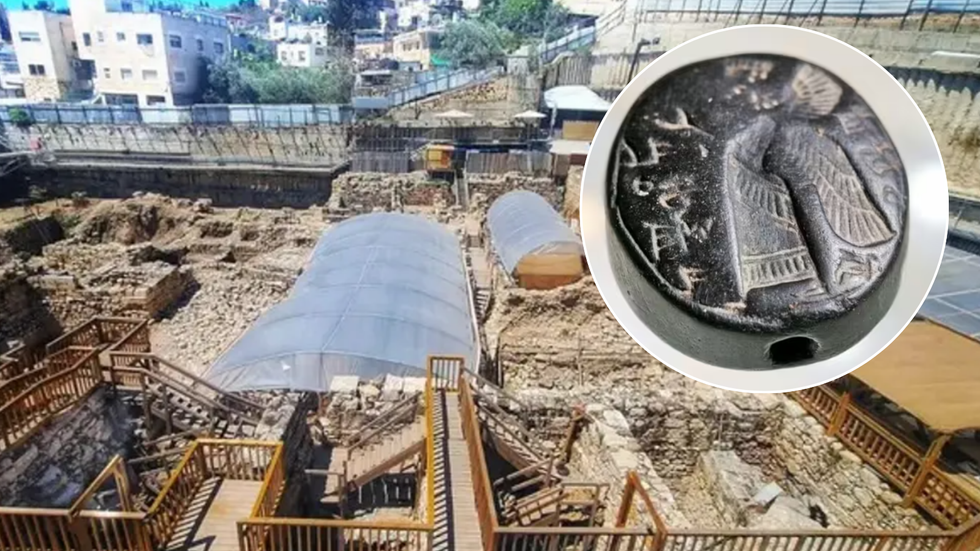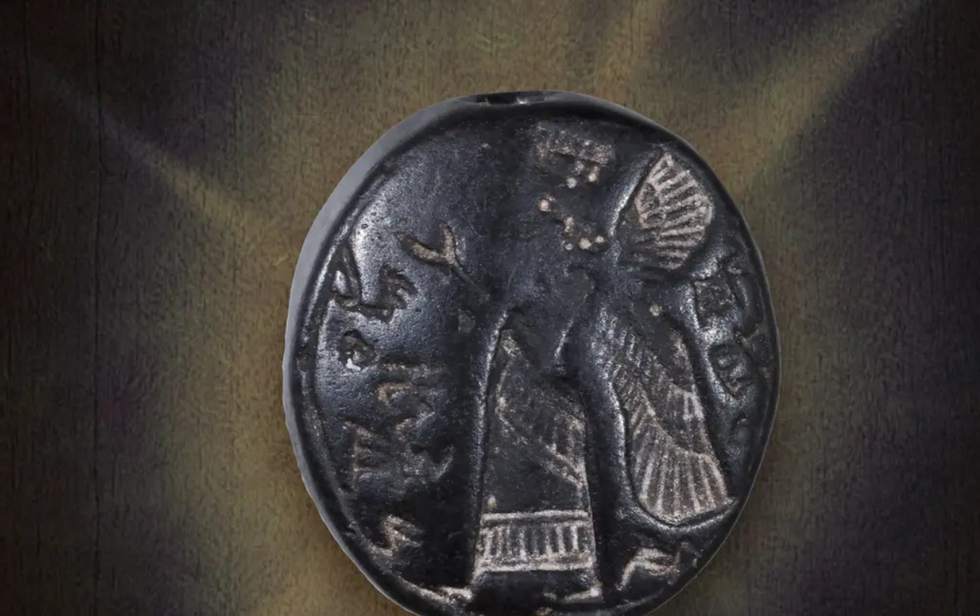Archaeologists recover ancient seal confirming 2,700-year-old biblical account
Israel Nature and Parks Authority/Israel Antiquities Authority
Researchers say that the stone is evidence that reading and writing was more widespread in Jerusalem than previously believed
Don't Miss
Most Read
Trending on GB News
Archaeologists in Israel have discovered an ancient seal which has affirmed a biblical account of Jerusalem from 2,700 years ago.
The stone dates back from the first temple period and is one of the oldest finds since the start of excavations in the country.
The seal, which was found in the City of David National Park, is a piece of evidence of widespread reading and writing skills during that period than had been previously believed, researchers have said.
Dr Yuval Baruch and Navot Rom, excavation directors, said: “The seal, made of black stone, is one of the most beautiful ever discovered in excavations in ancient Jerusalem, and is executed at the highest artistic level.
 Archaeologists recover ancient seal confirming 2,700-year-old biblical accountIsrael Nature and Parks Authority/Israel Antiquities Authority
Archaeologists recover ancient seal confirming 2,700-year-old biblical accountIsrael Nature and Parks Authority/Israel Antiquities Authority“Contrary to what may be commonly thought, it seems that literacy in this period was not the realm only of society’s elite.
“People knew how to read and write - at least at the basic level - for the needs of commerce.”
He added that the character of a winged-man in a distinct Neo-Assyrian style was “very unique and rare” in the Temple period. Its inclusion suggests that the Assyrian Empire had a larger influence than thought on the region, archaeologists said.
The press release said the “figure raises one arm forward, with an open palm; perhaps to suggest some object it is holding. On both sides of the figure an inscription is engraved in paleo-Hebrew script – ‘LeYehoʼezer ben Hoshʼayahu.’”
LATEST DEVELOPMENTS:
It continued: “The name Yehoʼezer is familiar to us from the Bible (Chron. I 12:7) in its abbreviated form – Yoʼezer, one of King David's fighters," while also stating that "in the book of Jeremiah (43:2), describing the events of this very period, a person is mentioned with a parallel name, ʼAzariah ben Hoshʼaya.
“The two parts of his first name are written in reverse order to the seal owner’s name, and his second name is the same, appearing in its abbreviated form. This writing form in the text fits the name on the newly discovered seal and it is thus appropriate for this time period.”
The team think that the object was worn as an amulet around the neck of a man who held a senior position in the Kingdom of Judah’s administration.
They came to this conclusion after finding a hole had been drilled through the stone, which would have allowed it to be worn on a string.

The team think that the object was worn as an amulet around the neck of a man who held a senior position in the Kingdom of Judah’s administration
Israel Antiquities Authority
Israeli Minister of Heritage Amichai Eliyahu celebrated the “spectacular” discovery, noting that it demonstrates that Jersuelam emerged as an international hub for commerce 2,700 years ago.
"It is impossible not to be moved by such an unmediated and direct encounter with a chapter of our past, a time in which the First Temple stood in all its glory,” he said.
The City of David team will put the seal on public display next week in Jerusalem for two days during the annual research conference, with viewings on September 4 and 5.








